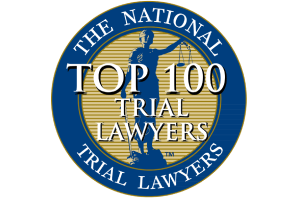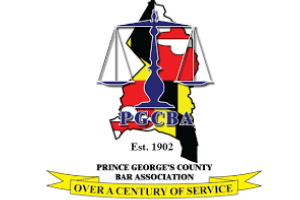Your Family
Diagnosis & Treatment of Traumatic Injuries
Although musculoskeletal disorders can be caused by single traumatic injury, they can also be caused by poor posture, faulty body mechanics, loss of flexibility and a general decline of physical fitness. There are limitations as to what can be accomplished when degenerative processes are obvious. There are different approaches available to determine the basis for evaluation, assessment and treatment of musculoskeletal disorders. One approach is to assess and treat a patient based upon the specific pathology determined in an evaluation. The pathology presents an unique clinical picture which, when clear and specific, can be treated based upon previous successful experiences. Unfortunately, a clear clinical picture does not always present itself. At that point, the treatment of signs and symptoms becomes important.
Various treatment regimens, when administered appropriately, allow proper treatment of signs and symptoms. For example, initially to treat pain, immobilization and rest may be used. Similarly, modality therapy can relieve pain. Different modalities such as electrical stimulation, ultrasound, hot packs, cold packs are examples of modality therapy. Moreover, mobilization can sometimes relieve pain. This might include traction, massage or spinal manipulation. In addition to treating pain, it is important to increase mobility. Failure to treat mobility may lead to early degenerative changes. Exercises, correction of postural or biomechanical stresses are examples of treatment to increase mobility. On the other hand, sometimes it is important to use treatment to reduce mobility. This is done at times by muscle strengthening, isometric exercise and heavy contractions with few repetitions. A skilled therapist might also use treatment to restore anatomical relationships. Traction, exercises, posture and mobilization can assist in this regard. Treatment may also be used to restore active function such as muscle strengthening, re-education techniques, muscle energy techniques. Moreover, treatment regimens may include treatment that promotes healing. Mechanical injuries often involve inflammatory processes that require healing. Immobilization and rest, ice, heat, electrical stimulation, whirlpool, massage and other modalities are useful for this purpose. Other treatment might include correcting poor posture, improving general physical and mental fitness, and training and instructing the patient in proper care of their body.
It is important that the medical provider collect data which is relevant, accurate and measurable in order to treat the patient properly. Subjective information is important. In other words, the provider must listen to the patient’s complaints. Objective findings are also important. These are obtained through various physical tests, examinations and/or diagnostic tests. It has become common practice for the medical provider to use what is known as S-O-A-P notes. These letters stand for subjective, objective, assessment, and plan. It is a format that is universally used to summarize various portions of the overall goal of healing the patient. The sequence of the evaluation depends on the nature of the complaint and injury involved. It is important for the provider to listen to the patient’s complaints, the nature of the symptoms, the location of the symptoms, the behavior of the symptoms, the duration of the symptoms, the affect of any previous treatment and other related medical problems. An examination may consist of things such as a postural assessment, active range of motion of the cervical or lumbar spine, forward, backward and lateral bending, resisted muscle tests of the cervical spine, resisted shoulder elevation, resisted shoulder abduction, active shoulder flexion and rotation, resisted elbow flexion, resisted elbow extension, active range of motion of the elbow, resisted wrist flexion, resisted wrist extension, resisted thumb extension, resisted finger abduction, Babinski reflex test, toe raises, heel walking, active rotation of the lumbar spine, straight leg raise, sacroiliac sprig test, resisted hip flexion test, passive range of motion to hip, resisted knee extension, knee flexion, medial and lateral tilt, femoral nerve stretch.
The medical provider should also perform a neurological exam which will consist of a series of tests to determine if there is impingement or encroachment upon a spinal nerve root, entrapment of a peripheral nerve, or central nervous system involvement. Resisted muscle tests, for example, are performed to determine if there is neurological involvement. If it produces pain or weakness, this provides the medical provider with symptoms that are important. Neurological involvement of C4-C7 is suggestive of nerve root disorder such as a herniated disc or encroachment of the nerve root within the intervertebral foramen. Thoracic outlet syndrome is more frequently seen involving level C9 and T1.
In addition to resisted muscle tests, muscle stretch reflexes, sensation testing, distraction tests, compression tests, Valsalva tests, Babinski tests and peripheral nerve entrapment tests are included in the cervical spine neurological examination. The thoracic spine rarely involves nerve root impingement and peripheral nerve entrapment. Sensation testing can be performed to determine the dermatome patterns of the thoracic spinal nerves. Neurological involvement in the thoracic spine may cause weakness of abdominal muscles. A significant test for the lumbar spine is the straight leg raise test. It is used to determine if there is nerve root involvement of the sciatic nerve. As the straight leg is raised, progressive tension is applied to the sciatic nerve which places tension on the nerve roots. Symptoms will be exacerbated by this maneuver. It is important for the provider to understand that any acute painful condition in the lumbar spine or sacroiliac may be aggravated by the straight leg raising test. Piriformis syndrome may also be affected by the straight leg raise test. The positive straight leg raise test indicates more severe pathology when it is positive at twenty to forty degrees of hip flexion and there is less severe pathology if positive at fifty to seventy degrees. It is difficult to interpret a straight leg raise as being positive at ranges over seventy degrees. Sometimes symptoms are enhanced if the opposite leg is raised. This suggests a disc herniation with protusion medial to the nerve root. If symptoms are relieved as the opposite leg is raised, a bulge lateral to the nerve root may be present.
The femoral nerve stretch test is used to determine if there are symptoms in the L1-L3 dermatomal region. In addition to the various tests, the skilled examiner will also use palpation to obtain valuable information about the condition of the structures and tissues involved. The skin is palpated and examined for tenderness, color, temperature, moisture and texture. Because pain is often referred, the site of the primary disorder may not be the same place that the patient describes the symptoms. The subcutaneous tissue may be palpated to determine if there are abnormal amounts of fat, tissue fluid, tension, swelling or nodules.
Examination of the extremities involves close observation of boney, joint and muscular structures of the involved part of the body. This is sometimes an easier examination than other parts of the body because there is the other extremity to use for comparison. Looking at the size of the muscle might give a hint to peripheral nerve injury or atrophy; if it does not compare favorably to the similar muscle on the other extremity. Mobility examination of the extremities consists of active, passive, resisted and special mobility tests. In addition, muscle strength testing may be used as well as ligament stress tests. Neurological tests sometimes are performed on extremities. However, these are usually performed to observe whether there is impingement upon the nerve roots which innervate them.
Carpal tunnel syndrome, for example, is established by noting the presence of one or more of three major clinical signs. These signs are hyposthesia, restricted to the media nerve distribution in the hand, Tinels sign or a tingling sensation radiating into the hand, on percussing the media nerve at the wrist; or Phelan’s test which is the reproduction or exaggeration of symptoms after holding the wrist in a complete flexion or extension for thirty to sixty seconds. Ulnar groove entrapment is usually located at the ulnar groove of the elbow. Most often the symptoms will include parathesia in the ulnar distribution and discomfort in the epicondylar area. Piriformis syndrome where the sciatic nerve and buttock musculature become tender often occurs as a result of referred pain from a lower back disorder. Common peroneal syndrome often is caused by scar tissue resulting from a fracture of the fibular head. surgery for Baker’s cyst, sprain of the joint or direct nerve injury.
Generally speaking, the spine has four distinct curves. These include the sacral area, which is curved convex posteriorally, the lumbar area which is concave posteriorally, the thoracic area which is convex posteriorally and the cervical area which is concave posteriorally. These normal curves reciprocate and balance one another and provide added strength for the vertebral column to withstand compressive blows. For example, in a radiologic finding, one often sees language where it is stated that the normal “S” curvature of the spine is reversed. This suggests the presence of spasm as a result of trauma. The functional components of the vertebral column include the vertebral bodies, the discs, the intervertebral foramen, articular processes, ligaments and muscles. The intervertebral discs consists of two parts: an inter-gelatinous center called the nucleus pulposus and an outer structure made up of layers of concentric fibers called the annulus fibrosus. The nucleus is basically water, the fibers of the annulus are oriented diagonally. The disc is flexible allowing motion in all directions and serves to dissipate forces and stresses transmitted to it. Thus, injury to a disc may cause severe pain. A disc is often compared to a shock absorber. Forward bending (flexion) rotation, extension, lateral tilt or rotation can all cause various stresses on the spinal column.
There is an interconnection of movement between the spine and the pelvis. This is especially true in forward bending of the spine. During forward bending, the lumbar curve reverses itself from concave to flat to convex. Similarly, the sacroiliac joints move during various lumbosacral movements.
Primary muscle disorders may be classified as strains, contusions, and inflammations. Any muscle has a normal resting length. If that length is disrupted by severe movement, or stretching, it can cause pain. The muscle adapts to its environment. Muscle guarding also accompanies pain, regardless of the underlying cause or whether it is referred from elsewhere in the body. Prolonged muscle guarding leads to inflammation and localized tenderness as well as muscle spasm. Treatment becomes necessary to reduce the pain and stiffness caused by muscle guarding and spasm. Effective treatment may include medication, heat, cold, massage, electrical stimulation, rest, active and stretching exercises and relaxation techniques.
Muscle strains and contusions are usually preceded by trauma. This might include injury to the body, a tearing sensation, aggravation or constant repetition of a new activity. Massage is a useful modality for treatment of muscular disorders especially of the chronic strain variety. A particularly helpful method of relieving such pain is high voltage electrical stimulation. Restoration of full function including strength and mobility and normal posture should be the most important aspects of treatment.
Facet joint impingement is a disorder that has made chiropractors popular because manipulation is usually an effective treatment. The mechanism of injury is usually a sudden, unguarded movement involving backward bending, side bending, and/or rotation even if there is little or no trauma. A patient with facet impingement usually gets relief from rest, and will identify pain caused by movement and may even feel locked into a certain posture. Facet joint sprain, on the other hand, indicates a history of moderate to severe trauma that may involve joint sprain with effusion in and around the joint itself. Facet joint impingement may be treated with mobilization. Facet joint sprain is usually treated with a more conservative approach using physical therapy modalities, pain-free movements, support and rest. The joint sprain needs time to heal.
Joint inflammation frequently follows acute joint sprain or chronic postural sprain. It may occur secondary to aggravation of degenerative joint disc disease such as by trauma. Like most inflammatory disorders, movement may cause pain. Joint hypomobility is a disorder that involves the entire spinal segment and usually results from immobilization secondary to injury. It often results from acute facet joint sprain if normal mobility is not restored as healing occurs. It can occur as well as a result of disc herniation. Joint hypermobility or instability usually involves the entire spinal segment and may be the result of severe trauma such as whiplash. Degenerative joint disc disease otherwise sometimes referred to as osteoarthritis or spondylosis is a chronic and progressive degeneration of the facet joints and/or the intervertebral discs. It can occur with neurological complications as well. Generally there are four characteristics of degenerative disc disease in the synovial joints. These include proliferation of calcific deposits in or around the perhiphia of the joint, wearing away of the hayaline cartilage, thickening of the synovial lining and joint capsule and thickening of the subchondrial bone. It is characterized by dehydration of the nucleus pulposus, narrowing of the intervertebral space, weakening and degeneration of the annular ring and approximation of the facet joints. Although it is a natural process of aging, it is also often not symptomatic until trauma occurs.
Herniated nucleus pulposus (HNP) is classified as a disorder in which there is displacement of the nuclear material and other disc components beyond the normal confines of the annulus. Four degress of displacement are recognized, namely, intraspongy nuclear herniation, protusion, extrusion, and sequestration. Protusion frequently occurs over a period of time but is usually asymptomatic in its early stages. Trauma can aggravate this condition. Nuclear herniation refers to the displacement of the nucleus into the vertebral body through the endplate. It is similar to a Schmorl’s node except that it is a traumatic defect rather than a developmental one like a Schmorl’s node. Indeed, Schmorl’s nodes are thought to stabilize the nucleus and diminish the intra-articular centrifugal force thus rendering posterior displacement less likely.
Herniated nucleus pulposus without spinal nerve root involvement involves the condition in which there is displacement of the nuclear material beyond the normal confines of the inner annulus producing a discreet bulge in the outer annulus. No nuclear material escapes however. Discogenic pain arises from the outermost rings of the annulus. In the lumbar spine, HNP protusion is most common in the L4-L5 and L5-S1 discs and is rarely seen above those levels. This disorder can be caused by a single injury or incident. It can also be caused by accumulated effects of months or years of forward bending and lifting, especially if symptoms are known to persist over a period of time prior to a trauma. Herniated nucleus pulposus with nerve root involvement is a condition in which the nucleus is bulging but is still contained within the annulus and/or posterior longitudinal ligament. The bulge is large enough to encroach into the spinal canal and/or the intervertebral foramen and is capable of impinging upon or irritating the nerve root. This condition can be sudden with no previous history of spinal pain. It can also result from gradually worsening condition. A discogram or MRI is often used to determine the amount of disc protrusion.
Herniated nucleus pulposis, extrusion or sequestration is a disorder in which the displaced nuclear material extrudes into the spinal canal through disrupted fibers of the annulus. This nuclear material escapes as free fragments which may migrate to other locations. This problem might involve more peripheral signs and symptoms as predominant as opposed to spinal signs.
Surgical correction of disc problems often involves a laminectomy or discectomy. These surgical procedures may remove or dissolve the disc herniation but follow up treatment and/or therapy may also be performed to correct posture, faulty body mechanics, stressful living, working habits, loss of flexibility, physical fitness and other underlying causes of the problem. The therapy program should start with restoration and maintenance of posture with extension principles and eventually involve full flexibility, strengthening, and fitness.
Nerve root swelling and inflammation (neuritis) can be severe enough to cause impingement or irritation and produce positive neurological signs. This is often seen within a few days following severe injury as an inflammatory protective response to the injury. Nerve root adhesions or entrapped scar tissue can also cause pain. This is sometimes seen following spinal surgery and also may follow an episode of disc herniation as the body attempts to heal the bulge or defect in the annulus, collagen tissue is laid down. If the nerve root is lying in proximity, it may become entrapped by scar tissue. Physical therapy helps reduce the formation of scar tissue and/or minimize it. If trauma is involved in any way, a radiological exam is the standard of care required to determine whether or not a fracture is present.
Spondylolisthesis is a defect involving the neural arch of the vertebra. When a defect in the neural arch is bilateral, separation of the anterior and posterior elements at the site of these defects may occur which is called spondylolisthesis. This often occurs at the L5-S1 level. The defect sometimes occurs as a stress fracture. This condition can be symptom free but can be made symptomatic by trauma. If this condition is the true cause of the patient’s symptoms, it is probably because the segment is unstable and the aggravation is due to the physical activities that are attempted.
Spinal stenosis suggests encroachment upon the cervical spinal cord resulting from a stenotic cervical spinal canal. This disorder is characterized by neurological symptoms, it may also occur in the lumbar spinal canal. Generally speaking, it is thought to be a narrowing of the spinal canal which produces compression of the nerves. A patient with lumbar spinal stenosis may have pain in the lower back and one or both legs, numbness and tingling in the feet and legs, decreased muscle reflexes and motor weakness in the legs. Spinal stenosis may not be symptomatic but may become symptomatic as a result of trauma. Trauma may also aggravate a pre-existing painful spinal stenosis.
Sacroiliac disorders are often present with a lumbar spine and hip joint problems. The sacroiliac is sometimes difficult to assess properly. Ankylosing spondylitis is a progressive joint sclrosis and ligamentous ossficiation which first appears in the sacroiliac joint and later spreads to the lumbar and thoracic spine and rib cage. Onset usually occurs between twenty-five and thirty-five years of age. This can lead to serious complications if not treated properly.
Rupture of the supraspinatus tendon is a common cause of shoulder disability. This is usually referred to as a tear of the rotator cuff. Frequently this is caused by a fall or direct blow to the shoulder. Spontaneous tears in patients under fifty years of age are unusual. Complete or extensive tears need to be repaired surgically. Physical therapy, at times, may promote healing prior to surgery. A considerable length of time is required for healing. Frozen shoulder or adhesive capsulitis is a disorder which develops when collagen fibers adhere to each other as the result of scar tissue. It is often more common in women than men and may occur during periods of immobilization, inactivity or inflammation. Frequently this injury involves loss of function. Another pathological injury is known as the shoulder-hand syndrome. This involves swelling and pain in the entire extremity and may result from a frozen shoulder, a lesion, myocardial infaraction, vascular accident, trauma, or cervical nerve root syndrome.
Meniscus injuries to the knee are very common. Twisting of a semi-flexed knee under stress may cause this injury. It usually occurs during weight-bearing. The patient frequently experiences immediate deep pain with giving way of the joint or locking of the joint. There may be a persistent clicking of the joint. Tear to the body of the meniscus is usually repaired by surgery and if left untreated may lead to early degenerative changes. If the tear or sprain is localized to the periphery, surgery may not be required. Diagnostic arthroscopy will assist the physician in determining the course of management.
Chondromalacia of the patella is a degenerative process that involves the cartilage of the articular surface of the patella. These changes may follow acute, severe trauma. Descending stairs is often difficult for patient with this disorder. Chondromalacia may be asymptomatic until trauma causes it to become symptomatic. Plica syndrome is a permanent fold of the synovium of the knee. Injury to the plica may occur as a contusion or a strain from a single, traumatic event. Inflammation, edema and thickening may result. Conservative treatment may be attempted, surgery may be indicated if the symptoms do not subside in a short course of physical therapy.
Chronic foot strain may develop when excessive stress is repeatedly placed on the foot. As a result, degenerative arthritic changes may take place. Ligaments exposed to the strain elongate and undergo inflammatory changes which result in pain. The ligaments degenerate and lose their supporting function and permit degenerative joint disease to develop.
Temporal mandibular joint presents with many symptoms. The roof of the TMJ consists of a temporal bone divided into four parts known as the post-glenoid spine, the mandibular fascia, the articular eminence, and the articular tubercle. The ends of the mandible are composed of condyles which form the floor of the TMJ. The temporal bone is separated from the mandibular condyle by the articular disc. The disc separates the TMJ into a larger upper joint space and a smaller lower joint space and is composed of fibro cartiligenous tissue. The articular disc is divided into three bands or zones and has various attachments. A fibrous capsule surrounds the TMJ. The most prominent ligament of the temporal mandibular joint articulation is the temporal mandibular ligament. This ligament provides support to the lateral wall of the capsule with which it is associated. One end of the temporal mandibular ligament is inserted into the posterior and lateral margins of the condylar neck and the other end is inserted into the zygomatic process and tubercle of the temporal bone. The innervative tissues of the TMJ are supplied by three nerves which are part of the mandibular division of cranial nerve V. The TMJ does not have hyaline cartilage.
Any treatment procedure that is performed to the TMJ must keep the functional requirements of this joint in mind. The function of the TMJ occurs with the condyle translating along the slope of the articular eminence, with the non-innervative portion of the disc between the two articulating surfaces. Movement of the mandible are a result of the action of the cervical and jaw muscles. These stabilize the head to increase the efficiency of the mandibular movements. Altered muscle activity can be the result of a TMJ affliction. The TMJ is a simple hinge joint in which the articular surfaces glide over or slide against each other during movement. The TMJ allows the mandible to perform opening and closing movements as well as lateral movements, all of which assist in chewing and talking.
Trauma to the TMJ joint includes injury resulting in fractures and dislocations of the TMJ. The signs of dysfunction include viscondyle derangement, anterior disc dislocation, subluxation, translation occurring too soon in opening. TMJ imaging is often performed by arthrography which is the injection of a contrast material into the synovial space followed by radiography of the joint. This is used to identify disc dislocation. TMJ problems should not be treated by a regular dentist. A patient should be sent to a TMJ specialist so that permanent conditions do not develop.
Various spinal orthotics are used in the treatment of patients with orthopedic problems. These provide immobilization of the intervertebral joints, increased motion of intervertebral joints adjacent to those that are immobilized, transfer of part of the vertical load from the spine to other structures, increase in the intra-abdominal pressure (lumbar supports), decrease in intradiscal pressure, decrease in the venous return from the lower extremities, control of lordosis of kyphosis, providing the user with an awareness of correct posture, providing the user with a placebo effect, decrease of abdominal and/or spinal muscular activity and increase of spinal muscular activity. Examples of spinal orthoses include lumbosacral corset, chair back brace, knight spinal brace, Williams brace, sacroiliac belt, dorsal-lumbar corset, Taylor brace, Knight-Taylor brace, hyperextension brace, soft foam collar, hard plastic collar, Philadelphia collar, two and four poster braces and Somi brace. These orthoses, if fitted properly, can provide significant assistance to the patient.
Magnetic Resonance Imaging (MRI) and Computed Tomography Imaging (CT SCAN)
Radiographic examination is an objective essential part of any physical examination. Radiographic examination is used to detect fractures and dislocations that would suggest performance of standard orthopedic modaliti
Fibromyalgia
Fibromyalgia is a rheumatologic syndrome that affects more than five million people in the United States. People affected by fibromyalgia complain of wide spread pain throughout the body, fatigue, as well as tenderness and stiffness in the joints and muscles. Many people with fibromyalgia also suffer from sleep disorders, chronic fatigue syndrome, headaches, inflammatory bowel disease, anxiety and depression. Often the symptoms of fibromyalgia begin after physical trauma, infection, surgery, or psychological stress. Moreover others claim fibromyalgia is a direct result of trauma or physical injury to the brain or spinal cord. Fibromyalgia most often occurs in women, although researchers do not know why it occurs in women more than men. People with fibromyalgia often have difficulty carrying on daily activities because the pain is so extreme.
Furthermore, examples of types of trauma that could possibly cause a person to suffer from fibromyalgia are car accidents, work accidents, recreational accidents, sports injuries, and surgeries.
Often, a person suffering from fibromyalgia is forced to see various doctors before the condition is actually diagnosed. Because there are no reliable diagnostic tests for doctors to measure the actual amount of pain a person has, many doctors attempt to rule out other disease states and conditions before the diagnosis of fibromyalgia is actually made. Doctors want to make sure that there are no other potential causes of these symptoms that they can treat before making the diagnosis of fibromyalgia.
The American College of Rheumatology established criteria for a doctor to make a diagnosis of fibromyalgia in a patient. The patient must have a history of widespread pain lasting more than three months, and the presence of diffuse tenderness. Pain is considered to be widespread when it affects all four quadrants of the body, meaning it must be felt on both the left and right side of the body as well as above and below the waist. In order for a person to be diagnosed with fibromyalgia, he or she must also have at least 11 of the 18 designated tender sites that the American College of Rheumatology has classified.
In addition, the treatment of fibromyalgia varies from person to person. Since medical professionals do not know exactly what the underlying cause of fibromyalgia is, this syndrome can be difficult to treat. The most important thing to remember is to find a doctor who is familiar with fibromyalgia since not all professionals are. Rheumatologists are doctors who specialize in conditions that affect the joints. They treat patients with arthritis, lupus, osteoporosis, Lyme disease, autoimmune diseases, and other musculoskeletal pain disorders. Some family practice doctors and internal medicine doctors have experience in treating fibromyalgia as well. These doctors will help determine the right medicines for you to treat your pain. They might also refer you to alternative therapies such as massage, acupuncture, and movement classes like yoga or Pilates. Currently, the only medications that are approved by the FDA for the treatment of fibromyalgia are duloxetine, milnacipran, and pregabalin. Doctors also prescribe analgesics, nonsteroidal anti-inflammatory drugs, anti-depressants, and other medicines to treat the symptoms of fibromyalgia.
Moreover, there are other changes that a person can make to their daily routine to try to minimize the pain from fibromyalgia. First and foremost, it is always important to have a very well balanced diet, and to eat healthy foods at the right time of the day. Do not wait to eat breakfast until late in the morning, and do not eat your dinner too late at night. Diet will greatly impact how you feel. Also, it is very important to continue to exercise in any way that you can. Try to take a walk, ride a bike, go for a swim, or do some other form of exercise with little to no impact on joints or muscles. In addition, light and simple weight lifting is a healthy way to keep your muscles and joints functioning, and maintain your strength. Exercise is always a good way to minimize your pain, and to keep your body healthy. If you feel too much pain initially, then start out with a short and light work-out routine. Then, your routine will gradually become more intense as your body adjusts. It is also important to remember to change any routine at work that might be adding to your level of discomfort. For instance, if you have long work hours or a physically demanding job you should try to work less hours if possible or ask for a position which requires less physical involvement. If you sit in an area that is uncomfortable for long periods of time, you should try to get up and move around to stretch out your body more often, or ask your place of employment for a more comfortable sitting area. If you have a very high stress job, you should consider switching to a less stressful career since the high levels of stress can contribute to your pain. Finally, it is crucial for a person with fibromyalgia to get as much sleep and rest as possible. If you think you have a sleep disorder in addition to fibromyalgia then you should speak with your doctor about your sleep habits and issues. Your doctor will also give you some tips on how to improve your sleep habits. Getting the right amount of sleep could help improve some of symptoms of fibromyalgia.
In summary, there is a lot of research being done on fibromyalgia which means the diagnosis and treatment of this syndrome is likely to improve over time with new technology and advances in medicine. If you think you suffer from fibromyalgia and you believe it is the direct result of a car accident, an accident at work or any other type of accident that caused physical trauma to your body, consider contacting the law offices of Foran and Foran, P.A. The attorneys at Foran and Foran, P.A. can help you determine if you should be compensated for any sort of expenses that were incurred after the accident, such as medical expenses, lost wages, car expenses, and physical or emotional pain and suffering. The law office of Foran and Foran, P.A. is located in Greenbelt, MD and serves clients in the state of Maryland and Washington, D.C.
Ography Imaging (CT SCAN)
Radiographic examination is an objective essential part of any physical examination. Radiographic examination is used to detect fractures and dislocations that would suggest performance of standard orthopedic modalities might be inappropriate depending on circumstances. Moreover, the radiographic report assists a doctor from a medico-legal standpoint. It can provide an objective record of the patient’s bone and ligamentous integrity after an accident. Even a patient who may appear normal in a regular examination, may have delayed instability and develop significant problems. Usually the neutral lateral view is performed first in a post-traumatic situation. A large number of fractures may be visualized with this view, however, some fractures may not be observed from this view such as small, non-displaced fractures. Often an anteroposterior view should be used to supplement the neutral lateral view as it delineates the structures that were superimposed on the lateral view. There are lines that can be visualized on the radiograph that can be utilized by the medical provider in determining the degree of potential instability. It must be noted, however, that x-rays are primarily used to determine boney (osseus) structures. They do not demonstrate soft tissue to any significant degree such as ligaments, tendons, muscles.
A hyperextension/ hyperflexion injury (whiplash) is a phenomenon of motion. A complete post-traumatic series of x-rays should include the neutral lateral, flexion and extension laterals, right and left obliques, AP open mouth, AP lower cervical, and right and left pillar views. Each of these views is necessary for a complete examination in post traumatic cases as each impacts specific function in the spine. If spasm is present in a post-traumatic situation, studies should be done subsequently in the absence of spasm in order to reveal any other damage. The biomechanics of the spine is very important. Any loss of the normal lordotic curve of the cervical spine should be re-evaluated at the end of treatment since permanent loss of the cervical curve can be a precursor to future degenerative joint disease and will affect the injured person’s prognosis. Comparitive radiographic studies are often used to follow the healing progress of known injury.
State of the art cervical magnetic resonance and computed tomography imaging has become the gold standard for many in determining an appropriate diagnosis. Unlike the single x-rays views, especially in an injury situation that may be complicated, and therefore not always representative; a thorough review of a CT scan or MRI provides much more information. The muscles, ligaments, tendons and soft tissues can often be visualized in these enhanced diagnostic tools. Many believe that the MRI will replace the CT scan altogether.
The MRI and CT scans appear to be of approximate equal value in diagnosing disc abnormalities in the lumbar spine. In the cervical spine, however, there are more distinct differences and the MRI is usually the clear choice as a diagnostic tool. It involves no invasive intrathecal installation of contrast material as would be the case with the CT. Moreover, the MRI scan is capable of intrinsically evaluating the spinal cord for focal enlargements, diagnosed cord cavitation and increased signal intensity. Evaluation of disc abnormalities in the cervical region is also very well done with the MRI. It can demonstrate internal physiological degenerative changes of the disc space, signal intensity and other demonstrative concepts. The MRI scan is not technically a radiograph as there is no x-ray utilized.










